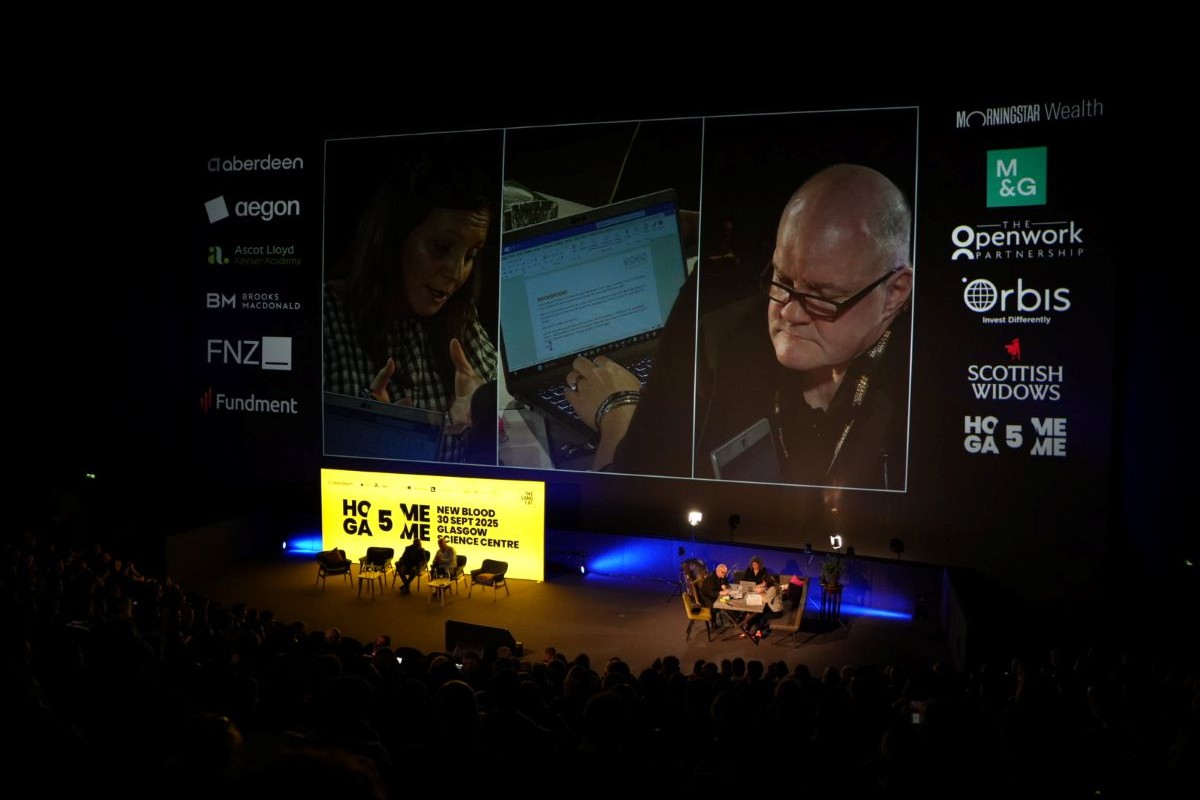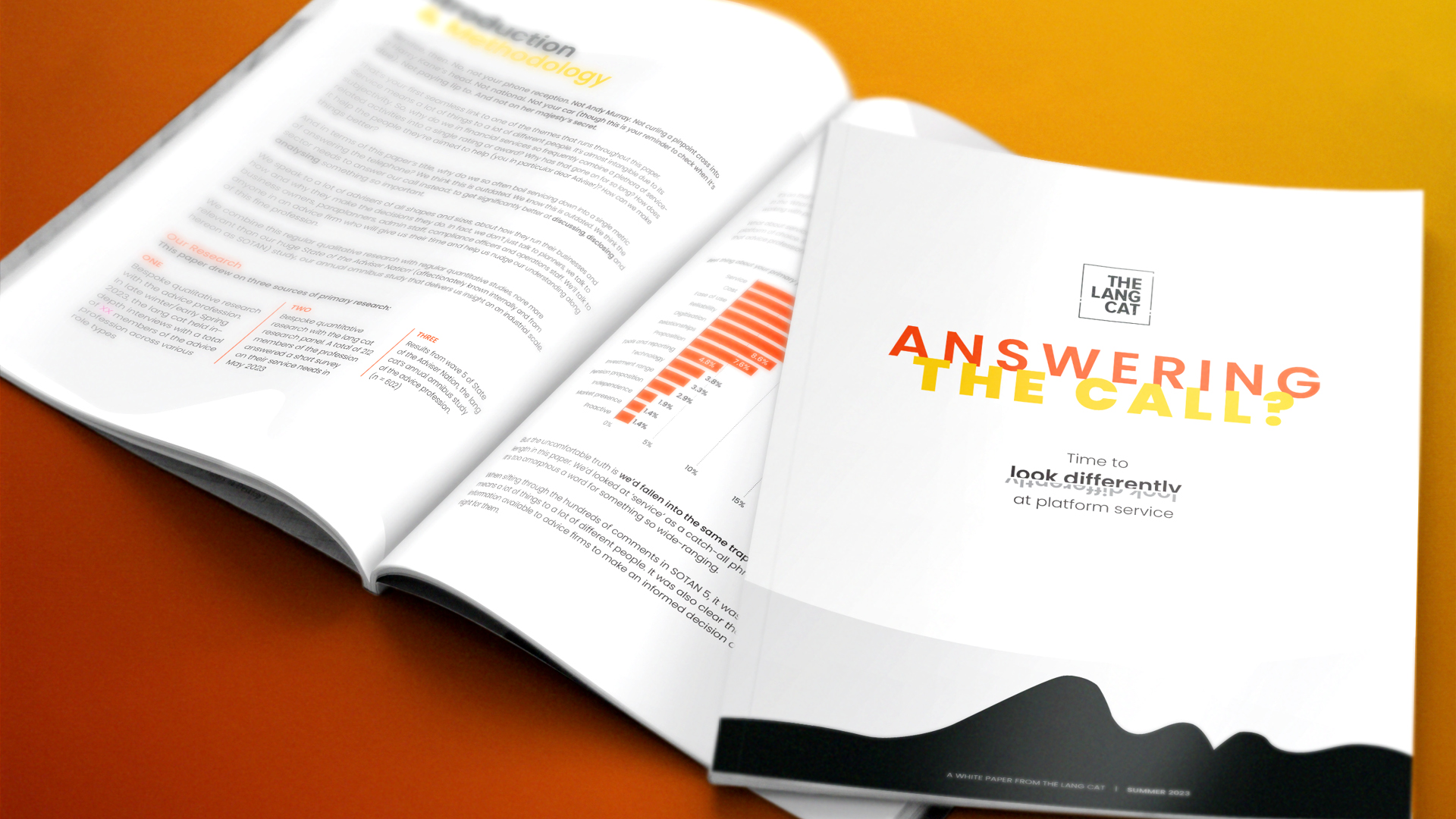When Steve and Mark first suggested the idea of doing live financial planning with a hired professional actor in the role of client, I admit I may have baulked at the prospect ever so slightly.
(Translation: the terror was real.)
But at HomeGame 5 in Glasgow, somehow we managed to pull it off.
The success of our live theatre experiment was completely down to the superstars we had involved – the inimitable and very funny Duncan Airlie James, starring as Charlie the construction worker, and Nicola Ellis and Jennifer Ellis of Wellington Wealth who brought not just live financial planning but live cashflow to the big screen.
Nicola and Jenny first met Charlie and carried out a condensed version of an initial client meeting, followed mere hours later by the presentation of the plan. This is no mean feat, and they were ably supported (both morally and in paraplanning terms) by Bryce Clark and Lewis Clark, who we also heard from on the day about their path to Wellington Wealth.
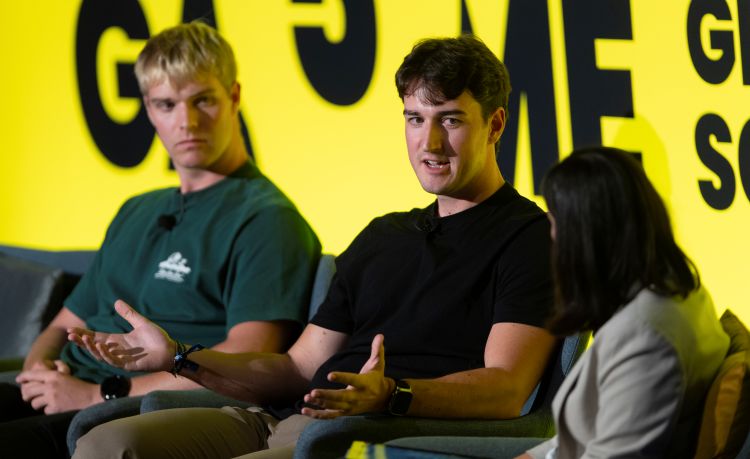
After both ‘meetings’, Nicola and Jenny shared on stage some of what delivering Financial Planning Live was like for them, and how it compares to their usual planning process.
Nicola: “I tried to let Charlie take the lead with the initial conversation, as I always try and do with clients. At the same time I have a structure I follow, while prodding any other topics as they come up.
“My loose structure covers a few key areas, things like home, work, retirement, fun, legacy. We like to call it our ‘dreamcatcher’ process. But inevitably you go down the conversational rabbit holes or go off piste a bit.
“We’d usually spend about an hour with a client for an initial meeting (rather than the shorter time we had on stage!). In advance of the meeting we’d usually send out a key details form, because we feel it’s important that the client is emotionally invested before they even and come and speak to us. If they’ve taken a little bit of time to put down some of their details and think about why they’re coming to us and what they’d like help with, then actually the first meeting generally flows quite well.
“What we’ve realised as part of doing Financial Planning Live is how much we actually do for clients, how much information we collect and where we need to fill in the gaps to formulate a proper plan.”
“If a client came to us without the wealth and properties that Charlie had, it might be that we can still help them, depending on their circumstances. In the real world, in advance of the meeting we send out a document that sets out our initial fees, as well as the costs for implementation and ongoing reviews. If the client is comfortable with that level of initial fee, it almost doesn’t matter what values are in the box. Charlie talked about knowing ‘the price of everything and the value of nothing’. I’m happy if clients get value from our service and if it’s meaningful to them.
“Obviously I’m mindful of whether we can genuinely add value or not, and I would point that out, and maybe give them some pointers. Throughout the year there may be the odd case where I don’t charge a fee, but if that person is engaged and willing to start learning [about their finances], then I like to encourage that. I’ll say to them to come back and see us once they get to a certain point and we can then help them further.”
Before and after the plan
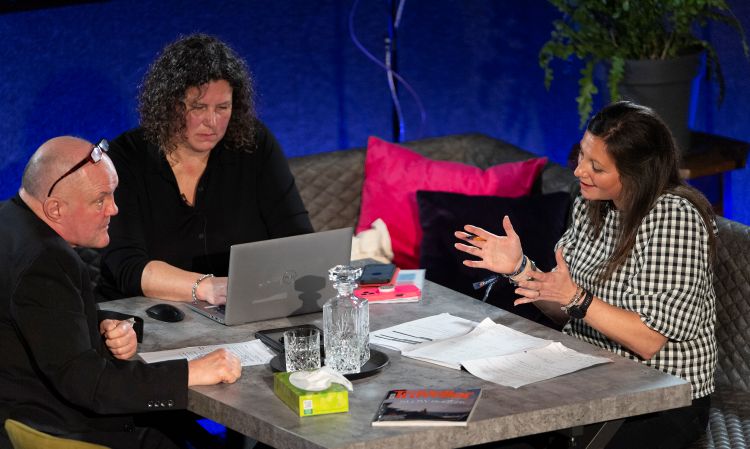
Nicola: “In the gap between the initial meeting and presenting the plan, we’ll be liaising with professionals, sometimes accountants or solicitors, and liaising with providers, which can also be a bit of a challenge for us. Sometimes there comes a point where we don’t actually have all the details, but we’ll arrange to meet with the client to see where we’re up to. We’d normally try to have that follow-up meeting within six to eight weeks.”
Jenny: “There’s an awful lot of information that you need to gather. It can’t be done on stage in a 30-minute meeting! But we could certainly give a flavour of that, and that the conversation is about the person and what they’re wanting to do. It’s nothing to do with us selling a product, which is the typical view of financial advisers.
“Planning is much more interactive, and collaborative with the client. And there’s a lot of give and take. We go back and forward to gather that information. The same goes for the plan itself – the client needs to feed into this, and the plan changes. It’s a several iterations approach.
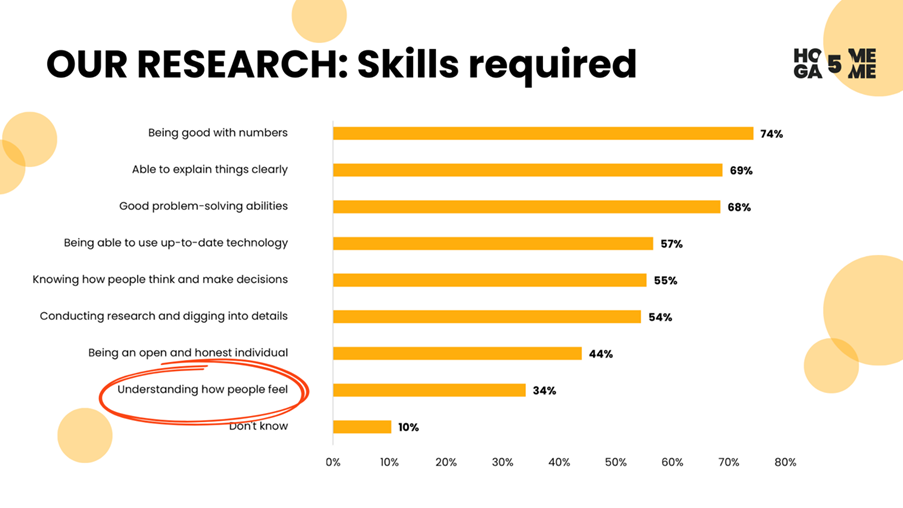
Jenny: “What we’ve realised as part of doing Financial Planning Live is how much we actually do for clients, how much information we collect and where we need to fill in the gaps to actually formulate a proper plan. In that typical eight-week gap between meetings, we’re doing things all the time.
“The other thing we’ve noticed is from Nicola’s perspective, and that’s the amount of thinking time she does on a client, which you don’t really take into account and a client might not fully appreciate. There is an awful lot of thinking time, whether that’s on the train or elsewhere – just formulating the plan takes a lot of effort.”

Nicola: “There were a lot of assumptions we had to put in with Charlie, and without meeting Charlie’s wife Fiona etc. It’s a lot of information to filter and condense. I didn’t really even touch on the regulatory part, and deliberately so. We do do it, I promise! There just wasn’t enough time to show that.
“Obviously with Charlie it wasn’t a real scenario. Some of the answers were quite conflicting, which does happen in real life. But most of the time backstage in our ‘broom cupboard’ was actually just getting the assumptions of what we were going to use and then formulating a plan. The thinking time was definitely something I didn’t realise I do.
“Depending on what route the client conversation takes, as the planner you might go down one rabbit hole, come back from that and then go down the next one. Planning is like a whack a mole: you do something in one place and it impacts somewhere else. I always say the plan is a first draft, and then we hone it.
“We did fast forward the process – we felt we had to present something back ‘for the telly’ and for something to show on stage. In real life we would have taken a lot more time, and wouldn’t necessarily go straight to the full recommendations.
“There were certain things that came up, like getting the best cash rate or taking money out of the business to put into a pension. As the planner you might think these are simple things to do. But for the people sitting in front of you, it’s completely new. And not simple at all.”
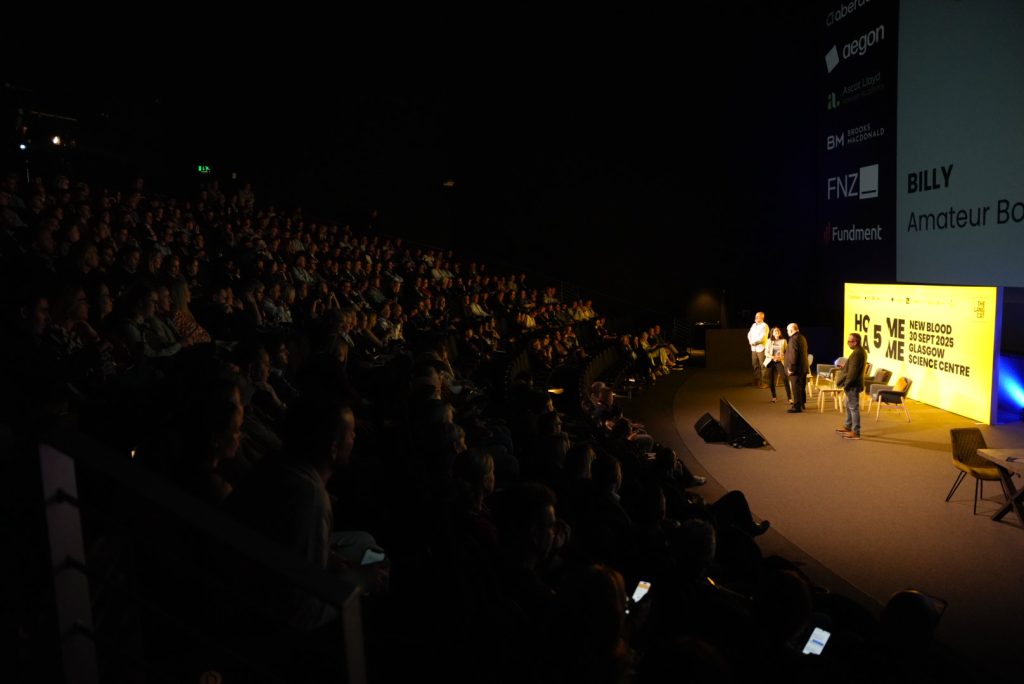
HomeGame 5 New Blood: In pictures
Want to see us re-run Financial Planning Live all over again? Featuring new planners, new client scenarios and a whole new London audience of planners, industry, young people and new joiners.
New Blood 2: No Wrong Path is on 4 February 2026 at Kings Place, London. Now booking: Find out more and secure your place
